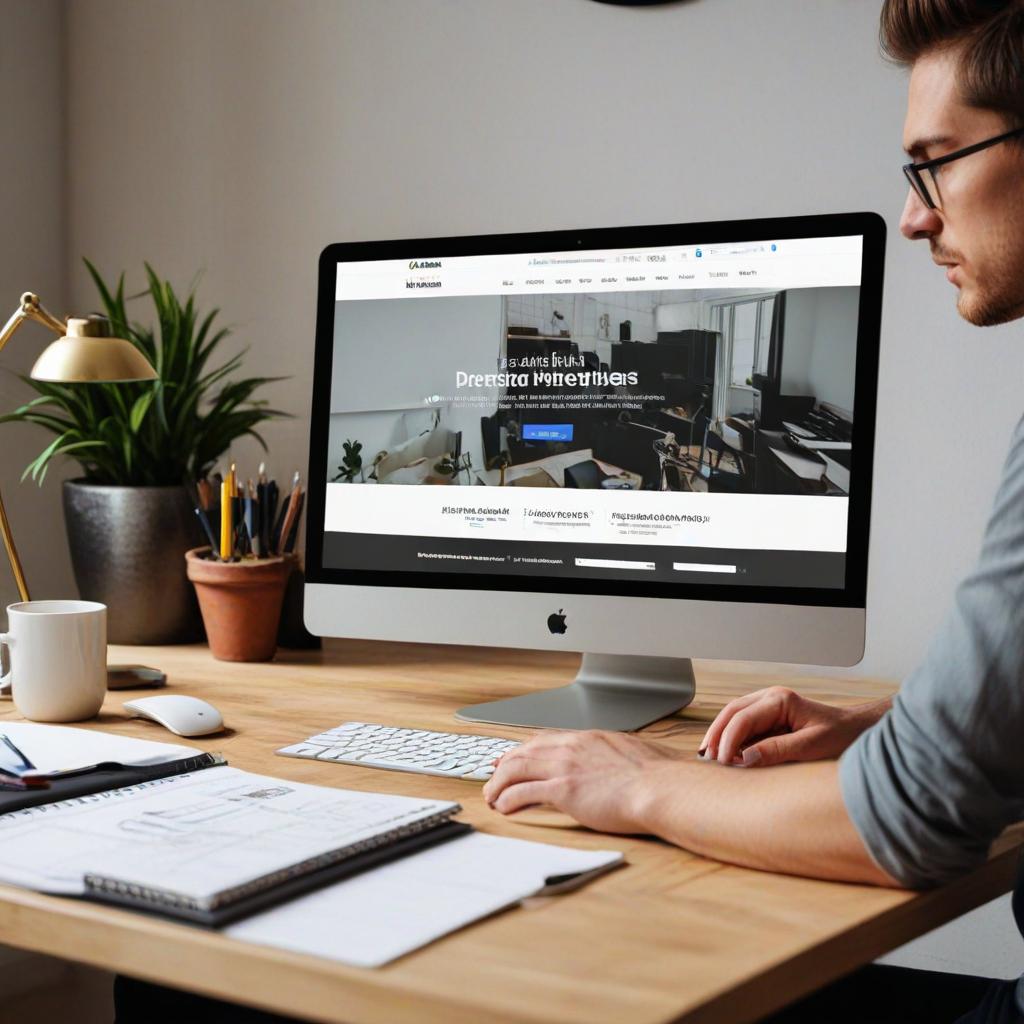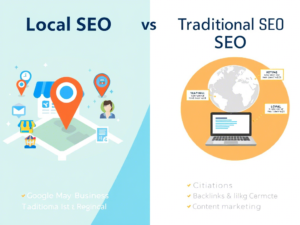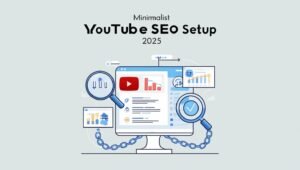Web Designers Charge
Introduction
Wondering how much that stunning website redesign will really cost? Let’s break down freelance web designer hourly rates and pricing models in 2024, so you can budget wisely and get the website your business deserves.

Web design is the process of creating the visual layout, user interface, and overall aesthetic of a website. It’s more than just making things look pretty – effective web design:
- Captivates Your Audience: First impressions count. A well-designed website grabs attention and keeps visitors engaged.
- Builds Trust & Credibility: A professional website makes your business look legitimate and trustworthy.
- Enhances User Experience: Easy navigation, clear calls to action, and a responsive design make it a pleasure to use your site.
- Drives Conversions: Whether it’s making a purchase, signing up for a newsletter, or contacting you, a well-designed site guides users towards your goals.
Table of Contents
2024 Web Designer Hourly Rates:
Web Designer Hourly Rates: A Comprehensive Guide
The cost of web design can feel like a mystery, but understanding how web designers charge and the factors that influence pricing can help you make informed decisions.
Understanding the Average Hourly Rate
The average hourly rate for a web designer typically falls within the $50 to $150 range. However, it’s crucial to note that this is a very broad spectrum, and actual rates can vary significantly depending on several key factors.
Factors Influencing Web Design Pricing
- Experience and Expertise: Seasoned web designers with extensive experience and specialized skills often command higher rates than those just starting.
- Project Scope and Complexity: The size and complexity of the website project play a major role. A simple, brochure-style website will be more affordable than a large e-commerce site with complex features.
- Location: Web designers in major metropolitan areas or regions with a higher cost of living may charge more than those in smaller towns or rural areas.
- Services Offered: Some web designers offer a comprehensive package that includes design, development, content creation, and SEO. Others may focus solely on design. The range of services will impact the overall cost.
- Freelance vs. Agency: Freelance web designers generally have lower overhead costs than design agencies, potentially leading to more affordable rates. However, agencies might offer a broader range of expertise and resources.
How to Find Affordable Web Design
If you’re on a budget, there are still ways to find quality web design without breaking the bank:
- New Designers: Consider working with up-and-coming web designers who are building their portfolios. They might offer lower rates in exchange for the experience and testimonials.
- Design Contests: Platforms like 99designs allow you to launch a contest and receive multiple design concepts from different designers. This can be a cost-effective way to get creative ideas.
- Templates and DIY Options: For simple websites, exploring website builders or pre-designed templates can be a budget-friendly option. However, customization might be limited.
Choosing the Right Web Designer for Your Needs
While cost is an important factor, it shouldn’t be the sole deciding factor when choosing a web designer. Here are some additional considerations:
- Portfolio: Review the designer’s past work to see if their style aligns with your vision.
- Communication: Clear and open communication is essential throughout the project.
- Timeline: Ensure the designer can deliver the project within your desired timeframe.
- References: Ask for references from previous clients to gauge their satisfaction.
Freelance Designer Fees: A Closer Look
Freelance web designers offer flexibility and a personalized touch. Their fees can vary widely depending on the factors mentioned earlier. However, here’s a general overview:
- Hourly Rate: As discussed, the average hourly rate ranges from $50 to $150, but can be higher or lower.
- Project-Based Pricing: Some freelancers prefer to charge a fixed fee for the entire project, providing clarity and predictability for both parties.
Tips for Working with Freelance Designers:
- Get a Detailed Contract: Outline the scope of work, timeline, payment terms, and revisions.
- Set Milestones: Break down the project into smaller phases with corresponding payments.
- Communicate Regularly: Keep the lines of communication open to address any questions or concerns promptly.
By understanding the factors that influence web designer hourly rates and exploring the options available, you can confidently embark on your website project and find the perfect fit for your budget and needs.
Understanding Web Designer Hourly Rates, Cost of Web Design, and Website Design Pricing
Whether you’re a business owner seeking to hire a web designer or a designer yourself setting your fees, understanding the factors that influence rates is crucial.
Experience Level: Junior vs. Senior Web Designers 💼
- Junior Web Designers:
- Typically have 0-3 years of experience.
- Often charge lower hourly rates due to their developing skills and portfolios.
- Great for affordable web design or smaller projects with tighter budgets.
- Showcase their potential through personal projects or work completed during their education.
- Senior Web Designers:
- Possess 3+ years of experience and robust portfolios showcasing successful projects.
- Command higher freelance designer fees due to their expertise, problem-solving abilities, and proven track record.
- Well-suited for complex projects like eCommerce expertise or bespoke web applications.
- May specialize in specific industries, platforms, or design styles.
Location: Cost of Living and Local Competition 🌍
- Cost of Living: Web designers in regions with a higher cost of living often charge more to cover their expenses.
- Local Competition: The number of web designers in a specific area can influence rates. More competition might lead to more competitive pricing, while areas with fewer designers might see higher website design pricing.
Specialization: Niche Expertise 🎯
- eCommerce Expertise: Web designers with specialized knowledge in building and optimizing online stores often charge a premium. Their expertise in user experience (UX) design, conversion rate optimization (CRO), and platform-specific integrations (like Shopify or WooCommerce) is highly valuable.
- Other Specializations: Designers specializing in specific industries (e.g., healthcare, education), technologies (e.g., WordPress, React), or design styles (e.g., minimalist, illustrative) might also command higher rates due to their niche expertise.
Project Scope: Simple vs. Complex 🏗️
- Simple Brochure Website: A basic informational website with a few pages typically requires less time and effort, leading to lower cost of web design.
- Complex Web Application: Building a web app involves custom functionality, database integration, and potentially ongoing maintenance, resulting in higher freelance designer fees.
Factors to Consider When Choosing a Web Designer
- Budget: Determine your budget upfront to narrow down your options.
- Experience: Consider the complexity of your project and whether you need a junior or senior designer.
- Specialization: If your project has unique requirements (e.g., eCommerce), prioritize designers with relevant expertise.
- Portfolio: Review designers’ portfolios to assess their style, skill level, and experience with similar projects.
- Communication: Choose a designer who communicates clearly and understands your vision.

Cost of Web Design: Beyond Hourly
Project-Based Pricing for Web Design: A Comprehensive Guide
Project-based pricing is a model where a web designer charges a fixed fee for an entire project, rather than an hourly rate. This can be a win-win for both the designer and the client under the right circumstances.
Understanding Project-Based Pricing
- Fixed Scope: The project has clearly defined deliverables and a set timeline.
- Client Preference: The client prefers knowing the total cost upfront, rather than dealing with variable hourly billing.
- Web Designer Hourly Rates vs. Fixed Fee: In project-based pricing, the focus shifts from the time spent to the value delivered.
When Does Project-Based Pricing Make Sense?
Project-based pricing is ideal in the following scenarios:
- Clearly Defined Scope: When you can accurately estimate the work involved, define milestones, and set a realistic timeline.
- Client Budget: When the client has a fixed budget for web design, project-based pricing provides transparency and avoids unexpected costs.
- Client Preference for Predictability: Some clients dislike the uncertainty of hourly billing. Project-based pricing gives them peace of mind.
- Simple Projects: Projects with fewer revisions and a straightforward design process are well-suited for fixed fees.
Benefits of Project-Based Pricing for Web Design
- Cost of Web Design is Transparent: The client knows the total cost from the start, aiding in budgeting.
- Predictability for Both Parties: The designer can plan their workload, and the client can manage their finances effectively.
- Focus on Value, Not Time: Designers are incentivized to work efficiently and deliver high-quality results.
- Reduced Administrative Overhead: Less time tracking and invoicing for both the designer and the client.
How Much Do Web Designers Charge for Project-Based Pricing?
Several factors influence project-based website design pricing:
- Scope of the project: The complexity, number of pages, features, and functionality.
- Experience of the designer: Experienced designers often charge higher fees.
- Design revisions: The number of revisions included in the price.
- Additional services: Content creation, SEO optimization, etc.
Finding Affordable Web Design with Project-Based Pricing
Project-based pricing doesn’t have to be expensive. Many talented freelance designer fees are competitive, offering excellent value for money. Be sure to:
- Get multiple quotes: Compare prices from different designers.
- Communicate clearly: Ensure your needs are understood to avoid scope creep.
- Read contracts carefully: Pay attention to payment terms and revision policies.
Is Project-Based Pricing Right for You?
Consider these questions:
- Do you have a clear vision for your website?
- Are you comfortable with a fixed budget?
- Do you prefer knowing the total cost upfront?
If you answered yes to these questions, project-based pricing might be the perfect fit for your web design project.
Ballpark Figures for Website Design: A Realistic Cost Breakdown
Understanding the cost of website design involves numerous factors, including the complexity of the site, the features required, and the designer’s experience and location. Here’s a breakdown of typical cost ranges, incorporating various design elements and designer fees.
Basic (Informational, Few Pages)
These are simple websites designed primarily to share information. They typically have limited pages, basic functionality, and minimal custom design elements.
- Web Designer Hourly Rates: $25 – $50 per hour
- Freelance Designer Fees: $500 – $2,000 total project cost
- Affordable Web Design Options: Website builders (DIY) or templates can significantly reduce costs.
Cost Considerations for Basic Websites
- Domain Registration: $10 – $20 per year
- Web Hosting: $5 – $20 per month
- Content Creation (if not DIY): Varies depending on volume and quality
Business (Custom Features, Lead Generation)
Business websites aim to attract and convert visitors into leads or customers. They often include custom features like contact forms, lead generation tools, and possibly integrations with CRM systems.
- Web Designer Hourly Rates: $50 – $100+ per hour
- Website Design Pricing: $2,000 – $10,000+ total project cost
- How Much Do Web Designers Charge?: Varies significantly based on experience and location
Cost Considerations for Business Websites
- Custom Design Elements: Logo design, graphics, etc.
- Lead Generation Tools: Email marketing integration, CRM integration, etc.
- Ongoing Maintenance and Updates: Budget for regular content updates and technical support
eCommerce (Product Catalogs, Payment Gateways)
eCommerce websites involve complex functionalities like product catalogs, shopping carts, secure payment gateways, and order management systems.
- Web Designer Hourly Rates: $75 – $150+ per hour
- Cost of Web Design: $5,000 – $25,000+ total project cost (can be significantly higher for complex stores)
Cost Considerations for eCommerce Websites
- eCommerce Platform: Shopify, WooCommerce, Magento, etc. (each has its own pricing structure)
- Payment Gateway Integration: Stripe, PayPal, etc.
- Product Photography and Descriptions: Essential for high-quality product displays
- Security Measures: SSL certificates, fraud prevention tools
Additional Factors Affecting Website Design Costs
- Designer’s Experience Level: Senior designers typically charge higher rates.
- Geographic Location: Costs can vary based on the designer’s location and the local market rates.
- Content Management System (CMS): Some CMS platforms are more complex and require specialized knowledge, impacting costs.
Finding Affordable Web Design Solutions
- Templates and Website Builders: Great for DIY options or for those on a tight budget.
- Freelance Platforms: Platforms like Upwork and Fiverr offer access to a wide range of designers at varying price points.
- Get Multiple Quotes: Compare quotes from different designers to get a sense of fair market pricing.
The Hidden Costs of “Cheap” Web Design: A Cautionary Guide
Unraveling the Low-Ball Web Design Pricing Trend
In the digital age, where a strong online presence is non-negotiable, the allure of “affordable web design” or low “freelance designer fees” is undeniable. However, it’s crucial to approach extremely low quotes with caution. While budget-friendly options exist, excessively cheap web design services often come with hidden costs that could ultimately hurt your business.
Website Design Pricing: Quality vs. Quantity
- Web Designer Hourly Rates: Reputable web designers invest time in understanding your brand, target audience, and goals. This translates into higher hourly rates, which are justified by the expertise and value they bring.
- Cost of Web Design: Comprehensive web design involves strategy, research, design, development, and testing. Each phase requires skill and resources, contributing to the overall project cost.
- How Much Do Web Designers Charge?: Prices vary depending on experience, complexity, and location. However, be wary of rates that seem drastically below the industry average.
The Risks of Sacrificing Quality for “Savings”
- Subpar Functionality: Extremely low quotes may indicate the use of pre-built templates or outdated technology. This can lead to a website that’s difficult to navigate, slow to load, and incompatible with different devices.
- Design Flaws: Cutting corners on the design process can result in an unattractive, unprofessional website that fails to represent your brand effectively.
- Security Vulnerabilities: Cheap web design often neglects essential security measures, leaving your website susceptible to hacking and data breaches.
- Limited Support: Designers offering rock-bottom prices may not provide ongoing maintenance or updates, leaving you stranded if issues arise.
Affordable Web Design: Striking the Right Balance
- Realistic Expectations: Acknowledge that quality web design comes at a reasonable cost. Set a budget that aligns with your needs and prioritize value over the lowest price.
- Transparent Pricing: Choose designers who offer clear and detailed pricing structures. This helps avoid hidden fees and ensures you understand what you’re paying for.
- Portfolio Review: Assess the designer’s portfolio to gauge their experience, style, and ability to deliver results.
Freelance Designer Fees: A Red Flag or a Bargain?
- Red Flags: Beware of freelancers who promise unrealistic timelines, offer vague project details, or lack a professional online presence.
- Due Diligence: Research the freelancer’s reputation, check client reviews, and ask for references before committing to a project.
- Written Agreements: Always have a detailed contract outlining the scope of work, deliverables, timelines, and payment terms.

A well-designed website is a powerful asset that can attract customers, build brand credibility, and drive business growth. While it’s tempting to opt for the cheapest option, remember that quality web design is an investment in your long-term success. By choosing a reputable designer and prioritizing value over the lowest price, you’ll ensure your website delivers a positive user experience and contributes to your business goals.
Finding Affordable Web Design
Affordable Web Design: Strategies for Every Budget
Finding the right web designer within your budget requires some strategy. Here are a few approaches to consider, depending on your needs and financial constraints:
New Designers: Balancing Risk and Reward
New designers, eager to build their portfolios, may offer significantly lower rates than established professionals. This can be a great opportunity to get a quality website at a fraction of the cost.
- Risk: The potential downside is their lack of experience. They may not have a large portfolio to showcase their work, or their skills might not be as refined.
- Reward: The reward is the chance to work with a hungry, motivated designer who may go above and beyond to impress you. You might even get to influence their design style early in their career.
Student Designers: Supervised Talent
Design schools often have programs where students work on real-world projects under the supervision of experienced instructors. This is an excellent way to get a professionally designed website at a reduced cost.
- Benefits: You gain access to fresh ideas and the latest design trends. The project gets the attention of both the student and their instructor, ensuring a high level of quality control.
- Considerations: The timeline might be longer than with an established designer, as students juggle coursework and projects.
Bartering: Skills for Skills
If you have skills or services you can offer in exchange for web design, bartering can be a creative solution. Many designers are open to trading their expertise for things like writing, photography, marketing, or even home repair.
- Pros: This is a great way to bypass monetary costs altogether and build a mutually beneficial relationship.
- Cons: Finding the right match can take time, and it’s essential to establish clear expectations upfront to avoid misunderstandings.

Limited Scope: Prioritize the Essentials
If your budget is tight, consider focusing on essential features initially. You can always add more bells and whistles later as your business grows.
- Prioritize: Start with the core pages (homepage, about us, contact) and basic functionality (mobile responsiveness, clear navigation).
- Phase it: Once these essentials are in place, you can gradually expand the site with additional features like e-commerce, blogs, or more complex design elements.
There are many ways to approach web design costs. Don’t be afraid to get creative and explore options outside the traditional hiring model. The key is to find a solution that balances your budget with your needs.
Professionalism in Web Design: The Foundation of Successful Projects
Professionalism isn’t just about looking sharp; it’s the bedrock of trust, efficient workflows, and ultimately, a website that meets your goals. Let’s delve into why this matters and how it impacts various aspects of web design.
The Importance of Clear Contracts
Contracts might seem formal, but they’re your safety net. A well-drafted contract outlines:
- Scope of Work: Details exactly what the web designer will deliver (e.g., number of pages, specific features, revisions included).
- Timeline: Sets clear deadlines for project phases and final delivery.
- Payment Terms: Specifies web designer hourly rates or the total cost of web design, payment schedule, and any late fees.
- Ownership: Clarifies who owns the final design and any associated intellectual property.
A clear contract protects both you and the designer, preventing misunderstandings down the line.
Addressing Common Contractual Issues
- Scope Creep: This happens when the project’s requirements expand beyond the original agreement. A contract should have a clause for handling scope creep, either by adjusting the timeline and budget or by clearly defining what’s out of scope.
- Revisions: Clearly state how many rounds of revisions are included in the website design pricing. Beyond that, additional fees might apply.
- Kill Fees: In case a project is terminated prematurely, a kill fee compensates the designer for the work done up to that point.
The Power of Open Communication
Communication is the oil that keeps the project running smoothly. Here’s how to make it work:
- Regular Updates: The designer should provide regular progress reports, either through emails, calls, or project management tools.
- Feedback Loops: As the client, give timely and specific feedback. Vague comments like “I don’t like it” aren’t helpful. Instead, say “I’d prefer a bolder font for the headers.”
- Addressing Concerns: If you have any worries about the timeline, budget, or design direction, raise them immediately. Don’t let small issues snowball into major problems.
Tools for Effective Communication
Several tools can facilitate communication:
- Project Management Software: Platforms like Asana or Trello allow you to track tasks, deadlines, and share files.
- Video Calls: Zoom or Google Meet are great for face-to-face discussions and design reviews.
- Email: Good for formal communication and keeping a record of decisions.
Finding the Right Web Designer
Choosing the right designer is crucial for a successful project. Consider these factors:
- Portfolio: Review their past work to see if their style aligns with your vision.
- Experience: Look for designers with experience in your industry or niche.
- Communication Style: Do you feel comfortable communicating with them? Do they listen to your ideas?
- Pricing: Get quotes from several designers to compare their freelance designer fees and ensure they fit your budget. Remember, the cheapest option isn’t always the best. Prioritize quality and professionalism.
Where to Find Web Designers
- Referrals: Ask friends, colleagues, or other businesses for recommendations.
- Freelance Platforms: Websites like Upwork or Fiverr connect you with freelance designers.
- Web Design Agencies: Agencies offer a wider range of services but might be more expensive.
- Local Directories: Search online directories or attend networking events to find local designers.
The Cost of Web Design: A Breakdown
The cost of web design varies widely depending on several factors:
- Scope: A simple website with a few pages will cost less than a complex e-commerce site.
- Features: Adding features like a blog, online store, or custom animations will increase the price.
- Designer’s Experience: Experienced designers typically charge higher web designer hourly rates.
- Location: Designers in major cities might charge more than those in smaller towns.
Finding Affordable Web Design
If you’re on a tight budget, there are still options for getting a professional website:
- Templates: Choose a pre-designed template and customize it to your needs.
- Website Builders: Use a DIY website builder like Wix or Squarespace.
- Student Designers: Partner with design students who might offer lower rates in exchange for experience.
- Negotiate: Don’t be afraid to negotiate with the designer to find a price that works for both of you.
How to Choose Your Web Designer
Choosing a web designer is a pivotal decision that can significantly impact your online presence and business success. While web designer hourly rates and cost of web design are essential considerations, they’re just the tip of the iceberg. Focusing solely on website design pricing might lead you to overlook other critical factors that contribute to a successful project. Let’s explore these factors in detail.
Skills and Expertise: The Foundation of a Great Web Designer
Technical Skills:
A skilled web designer should have a strong command of the following:
- HTML, CSS, and JavaScript: The building blocks of any website.
- Content Management Systems (CMS): Platforms like WordPress, Drupal, or Joomla for easy content updates.
- Responsive Design: Ensuring your website looks great on all devices.
- SEO (Search Engine Optimization): Designing with search engines in mind.
- Accessibility: Making the website usable for people with disabilities.
Design Skills:
Beyond technical know-how, your web designer should possess:
- Visual Aesthetics: An eye for layout, color, typography, and imagery.
- User Experience (UX) Design: Creating intuitive and easy-to-navigate websites.
- UI (User Interface) Design: Crafting visually appealing and interactive interfaces.
- Branding and Identity: Understanding how to translate your brand into a website.
Style and Portfolio: Aligning with Your Vision
Every web designer has a unique style. Review their portfolio to see if their website design pricing aligns with the quality of their work and whether their aesthetic resonates with your brand identity. Look for examples of projects similar to yours to gauge their capabilities.
Communication and Collaboration: Building a Successful Partnership
Clear Communication:
Effective communication is key to a successful web design project. Your designer should:
- Actively listen to your needs and goals.
- Clearly explain technical concepts in layman’s terms.
- Provide regular updates and seek your feedback throughout the process.
- Be responsive to your questions and concerns.
Collaborative Approach:
Look for a web designer who values your input and sees you as a partner in the process. A collaborative approach can lead to a website that truly reflects your vision.
Questions to Ask Your Potential Web Designer
Before finalizing your decision, ask these questions to ensure you’re on the same page:
- Can you walk me through your design process?
- What is your typical timeline for a project like mine?
- How do you handle revisions and feedback?
- Do you offer website maintenance and support?
- Do you have experience with SEO?
- Can you provide references from past clients?
Budget Considerations: Balancing Value and Affordability
While cost is important, don’t let it be the sole deciding factor. An affordable web design solution might seem attractive, but it’s crucial to balance value with price. An experienced designer who charges higher freelance designer fees might ultimately save you money in the long run by delivering a high-quality, functional, and visually appealing website.
Consider your budget, but be willing to invest in a web designer who can bring your vision to life and help you achieve your online goals.
Conclusion
A well-designed website isn’t just an expense—it’s a strategic investment in your brand’s success. It’s the digital storefront that welcomes customers, the platform that communicates your message, and the tool that drives conversions.
Whether you’re a small business seeking an affordable web design solution, or a larger enterprise exploring custom website design pricing, the right designer can transform your vision into a reality.
Don’t Just Settle—Get Quotes and Compare
The world of web designer hourly rates and freelance designer fees can vary widely. While it’s tempting to choose the most budget-friendly option, remember that quality and experience often come at a price.
Don’t hesitate to request quotes from multiple designers to get a sense of the market. Discuss your project scope, desired features, and timeline to get accurate estimates. This will help you find the perfect balance of affordability and expertise for your specific needs.
Your Next Steps: Finding Your Ideal Designer
Ready to embark on your web design journey? Here are some resources to help you find the perfect fit:
- Designer Directories: Explore online platforms that connect businesses with talented designers. Web Designer Directory Platform
- Design Questionnaires: Fill out detailed questionnaires to outline your project requirements and receive tailored recommendations. Web Design Questionnaire
- Word-of-Mouth: Ask your network for referrals and recommendations based on their own experiences.
Remember, your website is your most powerful marketing asset. By investing in professional web design, you’re not just building a website—you’re building a future for your brand.
FAQs
How Much Does Web Design Cost?
The cost of web design can vary significantly depending on several factors:
Scope of the project: A simple, five-page website will cost much less than a complex e-commerce site with custom features.
Experience of the designer: Experienced designers with a proven track record typically charge higher web designer hourly rates or project fees.
Location: Designers in major cities often have higher costs of living, which can be reflected in their website design pricing.
Additional services: Some designers offer ongoing maintenance, SEO optimization, or content creation, which can add to the overall cost.
How Much Do Web Designers Charge Per Hour?
Freelance designer fees often start around $50 per hour and can go up to $150 or more. Some designers may offer a flat project fee instead of hourly billing.
What is the Typical Pricing Structure for Web Design?
Hourly Rate: Common for smaller projects or when the scope is unclear.
Project-Based Fee: Provides a fixed cost for the entire project.
Retainer: A monthly fee for ongoing maintenance or updates.
How Can I Find Affordable Web Design?
Consider newer freelancers: They may offer lower rates to build their portfolio.
Explore website builders: Platforms like Wix or Squarespace offer DIY options for a lower cost.
Look for web design packages: Some designers offer pre-packaged services at a discounted rate.
What Should I Ask a Web Designer Before Hiring Them?
What is your experience? Ask for examples of their previous work.
What is your process for designing a website? Understand their workflow and communication style.
What is included in your pricing? Clarify what services are covered and if there are any additional costs.
Can you provide references? Speak to past clients to get a sense of their satisfaction.
Is It Worth Investing in Professional Web Design?
A well-designed website can:
Attract more customers: A professional look builds trust and credibility.
Improve user experience: A user-friendly site keeps visitors engaged.
Increase conversions: A well-optimized site can boost sales or leads.
Enhance your brand image: A strong online presence elevates your brand.
Where Can I Find a Web Designer?
Referrals: Ask friends, colleagues, or other businesses for recommendations.
Online platforms: Websites like Upwork or Fiverr connect you with freelance designers.
Local agencies: Search for web design agencies in your area.





